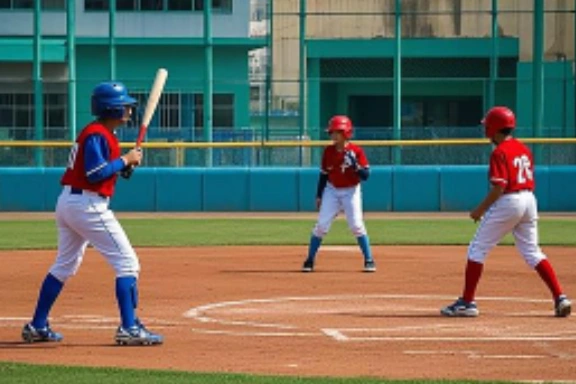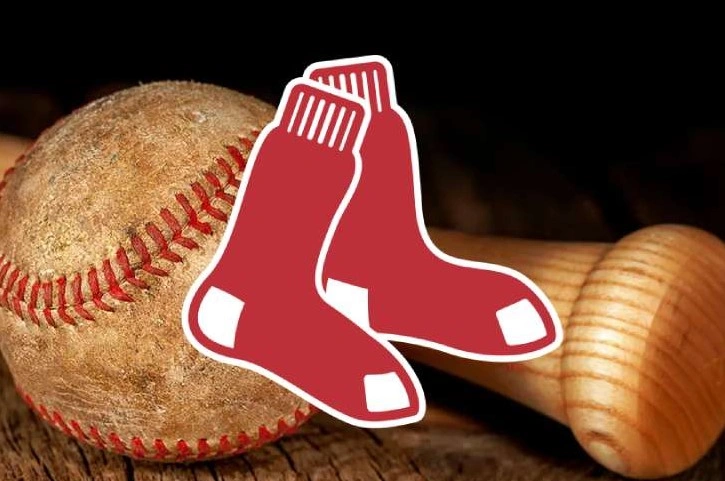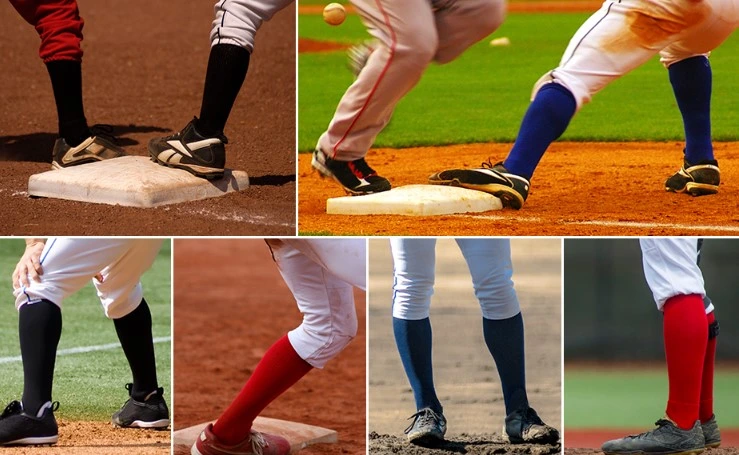Introduction to Kids Baseball Socks
Young athletes put a lot of stress on their feet and lower legs. A poorly chosen sock can cause blisters, slips, or discomfort. Yet many parents focus only on cleats or gloves. Good baseball socks serve as a second skin. They wick away sweat. They cushion impact. They keep sliding pants from bunching at the ankles. In short, they help kids stay focused on the game, not on pinching or chafing.

Supportive socks improve blood flow during rapid sprints and long practices. They reduce muscle fatigue in growing calves. Strategically placed padding protects the shin during sliding or diving plays. A snug fit keeps the foot stable inside the shoe, lowering the risk of ankle rolls. Proper socks also help regulate temperature, preventing overheating in hot weather or chilling on cool spring mornings. All these factors add up to safer, more effective play.
While standard socks serve most teams, custom designs elevate both function and brand identity. Teams can choose logo placement, team colors, and personalized sizing. Custom options let leagues order in bulk with consistent quality. They can specify compression levels for support or select extra cushion in high-wear zones. The result is a uniform look that fosters team pride and delivers socks tailored to each player’s needs.
Key Features of High-Performance Kids Baseball Socks
Moisture Management
Baseball involves sweat, grass stains, and constant movement. Moisture-wicking yarns pull sweat from the skin into the fabric’s outer layers. There, it evaporates quickly. This keeps feet dry and prevents fungal growth or odor. Dry feet also reduce blister risk, especially around the heel and toes where friction peaks. Look for blends labeled “quick-dry” or “performance” to ensure active kids stay comfortable through innings.
Cushioning and Support
Young players need protection underfoot and along the shin. Socks with built-in cushioning pads in the toe box, heel, and calf absorb impact from running and sliding. Arch support bands stabilize the midfoot, reducing strain during rapid direction changes. The right padding prevents bruising and helps growing muscles adapt to repetitive motion. Even light cushioning can make a noticeable difference in comfort, especially over long games or doubleheaders.
Durability for Rapid Growth
Kids outgrow gear fast. Still, socks must stand up to constant washing and game-day wear. High-density knitting and reinforced seams at stress points—heel, toe, and ankle cuff—extend service life. Polyester and nylon blends resist abrasion from cleats and dugout benches. Double-stitched logos and stripes help avoid peeling or fraying. Durable socks reduce replacement frequency while keeping players looking sharp on the field.
Choosing the Right Size and Fit
Proper sizing makes all the difference in comfort, safety, and performance. Baseball socks that are too tight may restrict circulation, while loose socks slip down and cause blisters.
Measuring Length and Circumference
Accurate measurements ensure socks stay up without cutting circulation. Have your child stand while you measure from heel to just below the knee. Record calf circumference at its widest point. Compare both numbers to the manufacturer’s size chart. If one measurement falls between sizes, choose the larger size for comfort—snug, not tight. Precise measurements help avoid pinching, rolling, or discomfort during play.
Fit Tips by Age Group
Toddlers and early-elementary kids often need more room for growth. A slightly larger size accommodates development without slipping. Upper-elementary players require firmer fits to handle quick sprints and slides. Teens usually match adult small sizes but still benefit from youth-specific cushioning and support. Always test socks with cleats on to confirm fit under realistic conditions. Fit checks should also consider game-time movement and flexibility needs.
Managing Growth Spurts
Rapid growth can leave socks baggy in just a few weeks. Buying two adjacent sizes solves this: start with the larger pair, then switch to the smaller as the child grows into it. For teams, rotating stock helps match sock inventory to changing player sizes. Custom orders can include incremental sizes at minimal extra cost, ensuring every player gets an ideal fit throughout the season. Planning ahead reduces waste and helps coaches maintain uniformity.
Material Selection for Durability and Comfort
Synthetic Fiber Blends
Youth baseball socks take a beating—dirt, sweat, friction from cleats, and constant motion all contribute to early wear. That’s why synthetic blends are the go-to choice for performance. Polyester provides outstanding durability and holds dye well, so team colors and logos don’t fade after frequent washes. Nylon brings elasticity and abrasion resistance, helping the sock retain its shape through repeated stretching and compression. This pairing is ideal for kids who slide, sprint, and pivot through long practices and weekend tournaments. Many modern socks also include a small percentage of spandex or elastane for added stretch, which ensures a snug, supportive fit that stays put during play.
Natural Fibers and Blends
While all-natural cotton socks are soft, they aren’t the best at moisture control. Cotton absorbs sweat and dries slowly, making it easier for blisters to form on warm game days. However, when blended with synthetics, cotton can offer comfort without sacrificing performance. Cotton-polyester blends deliver improved breathability and better moisture dispersion, which is especially helpful for younger players who may be on the field for hours. For more advanced needs, merino wool blends are becoming popular in cooler regions. Merino wool naturally regulates temperature, stays fresh longer, and wicks away sweat effectively. These qualities make merino blends a great option for spring and fall leagues or early morning games when the ground is still damp.
Reinforced High-Wear Zones
Durability isn’t just about the main fabric. The way socks are constructed in pressure-prone areas makes a major difference. Reinforced toes and heels use thicker yarns to guard against holes caused by cleats or intense movement. Padding in these zones also softens impact, reducing foot fatigue. Look for baseball socks with tightly knit arch bands that hug the midfoot—these help keep the sock from bunching and support the arch during quick lateral movements. A deep heel pocket prevents slippage, keeping the sock locked in place. Together, these reinforcements help youth players stay focused on performance, not on adjusting their gear.
Care and Maintenance Best Practices
Washing Guidelines
Turn socks inside out to protect logos and colored stripes. Use a gentle cycle with cold water and mild detergent—skip bleach or fabric softeners. Harsh chemicals weaken elastic fibers and fade team colors. After washing, reshape each sock and lay flat to dry. Avoid hot dryers that can shrink fabric and reduce elasticity.
Storage and Rotation
Store socks in a cool, dry place. Avoid piling damp socks in gym bags, which can invite bacterial and fungal growth. For teams, rotate sock inventory so no single pair bears all the wear. Label storage bins by size or player number to ensure quick access on game days and extend the life of every pair.
Replacement Indicators
Even the best socks wear out. Replace them when cushioning feels thin, elastic at the cuff no longer holds the sock up, or fabric shows holes or fraying. A professional look and consistent fit reinforce team pride and prevent distraction from equipment issues during play.
Styling and Design Options
Team Colors and Logos

Custom socks let teams display school or league colors from ankle to knee. Logos can appear on the calf or as a small emblem near the top cuff. Digital knitting techniques ensure sharp edges and precise color placement. Branded socks build team identity and make players feel part of something unified.
Stripe Patterns and Accents
Classic three-stripe designs remain popular, but many teams choose single stripes, side bars, or chevrons in contrasting colors. Placement of accents can elongate the leg visually or draw attention to sponsors. Design details help players stand out on the field and make sock choice part of a coordinated uniform.
Custom Fit Features
Beyond colors, custom orders can include graduated compression zones to support growing calves, reinforced shin patches for sliding, or extra stretch panels behind the knee for flexibility. These features cater to players’ specific needs and distinguish premium custom socks from standard off-the-shelf models.
Performance Benefits and Health Considerations
Enhanced Circulation and Muscle Support
Quality baseball socks for kids often include graduated compression features. Graduated pressure—strongest at the ankle and easing up the leg—promotes venous return and reduces blood pooling. Better circulation can help young athletes recover more quickly between plays, limiting leg fatigue during long practices or tournaments. Muscle support wraps the calf and shin, stabilizing fibers during sudden starts, stops, and pivots. Improved support can reduce soreness, allowing players to stay active through doubleheaders without the leg heaviness that leads to early fatigue.
Blister Prevention
Young feet are prone to blisters, especially in high-friction zones around the heel and toes during aggressive running or sliding. Socks with strategic padding in these areas act as a buffer, reducing shear forces that tear skin. Seamless toe construction further minimizes hotspots. Moisture-wicking materials pull sweat away from the foot surface, lowering dampness that softens skin and increases blister risk. When combined, these features keep feet dry, protected, and irritation-free, so kids can focus on making plays rather than adjusting socks in the dugout.
Injury Risk Reduction
Properly fitted, supportive socks contribute to overall lower-limb stability. Arch support bands hold the midfoot in place, preventing excessive pronation or supination that can strain ankles and knees. Reinforced shin panels guard against abrasion during slides or dives. By maintaining correct foot alignment, socks reduce the chance of ankle rolls and minimize stress on growing joints. For leagues that track youth athletic health, recommending performance socks can be part of a broader injury-prevention strategy.
Choosing Compression Levels for Youth Players
Light Compression Options
Light compression (8–12 mmHg) offers subtle support suitable for casual play and younger age groups. This level applies gentle pressure that eases mild swelling from extended standing in the outfield or batting practice. It’s an entry point for parents seeking extra comfort for their child without the snug fit of higher grades. Light compression socks fit most kids comfortably under standard baseball pants and can be worn throughout practice sessions.
Moderate Compression for Intensive Play
Moderate compression (12–16 mmHg) delivers firmer support for older kids and repeat tournament play. At this level, graduated pressure improves circulation and provides calf stability during aggressive running and sliding. Teams playing multiple games in a day or those traveling can benefit from moderate compression’s recovery aid between matches. Parents should ensure proper sizing, as moderate grades feel firmer; a correct fit prevents circulation issues while maximizing performance support.
Custom Compression Ratings
For youth travel teams and academies looking to differentiate their kit, custom compression ratings can be specified. Manufacturers can tailor graduated pressure from 10–18 mmHg based on age demographics or coaching recommendations. Custom orders may include mixed grades—for example, lighter compression in warm climates or stronger support where fields demand more sliding. Partnering with a supplier that offers flexible mmHg ranges ensures every player receives socks that match both developmental needs and playing conditions.
Purchasing and Ordering Guide
Minimum Order Quantities
Off-the-shelf kids’ baseball socks typically have no MOQ beyond standard pack counts (often 3–5 pairs). For custom-branded socks, manufacturers usually require a minimum order of 500–800 pairs per design. Bulk orders help reduce per-unit costs, making it feasible for travel teams, school districts, or retail partners. When calculating quantities, account for roster size, growth spurts, and spares for wash cycles to maintain a uniform look.
Lead Times and Delivery
Standard production for custom socks ranges from 3–4 weeks after artwork approval. Rush options may be available at an extra cost. Shipping time depends on destination and carrier; domestic deliveries typically add 3–7 days, while international orders can take 2–3 weeks. To avoid delays before the season starts, finalize designs and measurements at least two months in advance. Clear communication with the supplier on proof approvals and timelines is key to on-time delivery.
Working with Sales Representatives
A dedicated sales representative simplifies the ordering process. They guide you through design templates, color matching, and logo placement. Reputable suppliers provide material samples and compression test reports to verify performance standards. Your rep can also advise on packaging options—individual poly bags, team bundles, or retail-ready displays—depending on your distribution strategy. Establishing a strong relationship ensures smoother future reorders and responsive support for any product issues.
Budgeting and Cost Considerations
Balancing Quality and Price
When selecting baseball socks for kids, striking the right balance between quality and cost is crucial. Premium materials and reinforced construction raise unit prices, but they also extend sock life and reduce replacement frequency. Calculate the total cost of ownership by comparing durable, higher-priced options with basic, lower-cost socks that may need more frequent swaps. For teams on tight budgets, a mid-range choice—combining synthetic blends with targeted reinforcement—often offers the best value.
Volume Discounts and Bulk Pricing
Most manufacturers provide tiered pricing: the more pairs ordered, the lower the per-unit cost. Custom orders of 500–800 pairs usually trigger significant discounts. If you coordinate orders across multiple age groups or neighboring leagues, you can pool quantities to reach higher discount brackets. Remember to factor in seasonal sales or end-of-year promotions, which can further reduce costs.
Hidden Costs to Watch For
Beyond the base sock price, consider artwork setup fees, shipping, duties, and taxes. Customization often incurs a one-time art-charge—clarify whether revisions are included. Expedited production or delivery may add surcharges. For international orders, customs clearance or import tariffs can catch buyers off guard. Request a detailed quote that itemizes all potential fees to avoid budget overruns.
Customer Success Stories
Little League Champions
The Maplewood Minors outfitted their U12 team with custom Max Hosiery socks featuring school colors and light compression. Players reported fewer blisters and less calf fatigue during doubleheaders. At the state tournament, the team credited their consistent comfort for improved focus and endurance.
Travel Team Transformation
The Metro Raptors, a regional travel squad, switched to mid-weight, moisture-wicking socks with reinforced shin padding. Coaches noted a drop in sideline complaints about sore feet, and parents appreciated the reduced sock replacement costs. The Raptors went on to win their division championship, citing enhanced gear consistency as a key factor.
Retail Partnership Wins
A boutique sports shop partnered with Max Hosiery to offer exclusive youth baseball sock designs. Sales increased 40% in six months as customers sought durable, stylish options. The shop now maintains a standing reorder agreement, ensuring fresh stock aligned with each season’s color schemes.
Conclusion

Selecting the right kids’ baseball socks involves more than picking team colors. Consider material blends, cushioning, compression levels, and durability. Accurate sizing and care practices extend sock life, while bulk ordering and smart budgeting keep costs in check. Ready to elevate your team’s performance and style? Partner with Max Hosiery for custom-designed kids’ baseball socks. Choose your colors, logos, compression features, and materials. Enjoy competitive pricing, reliable quality, and expert support every step of the way. Contact us today to start your order and give your young athletes the comfort and confidence they deserve on the field!
FAQ
How do I choose the right sock height for baseball?
Opt for knee-high or over-the-calf lengths to protect shins and secure sliding pants, especially for older kids.
Can kids wear adult compression socks?
No—always use youth-specific sizes with appropriate compression ratings to ensure proper fit and support.
How often should baseball socks be replaced?
Replace every 3–6 months or when cushioning thins, seams fray, or elasticity fades from heavy use.
Do custom socks cost much more than standard options?
Custom orders have higher minimums but competitive per-pair pricing—bulk orders trigger discounts that narrow the price gap.
What’s the best way to prevent blisters with baseball socks?
Choose moisture-wicking fabrics, seamless toes, and targeted padding in high–friction zones to keep feet dry and protected.
